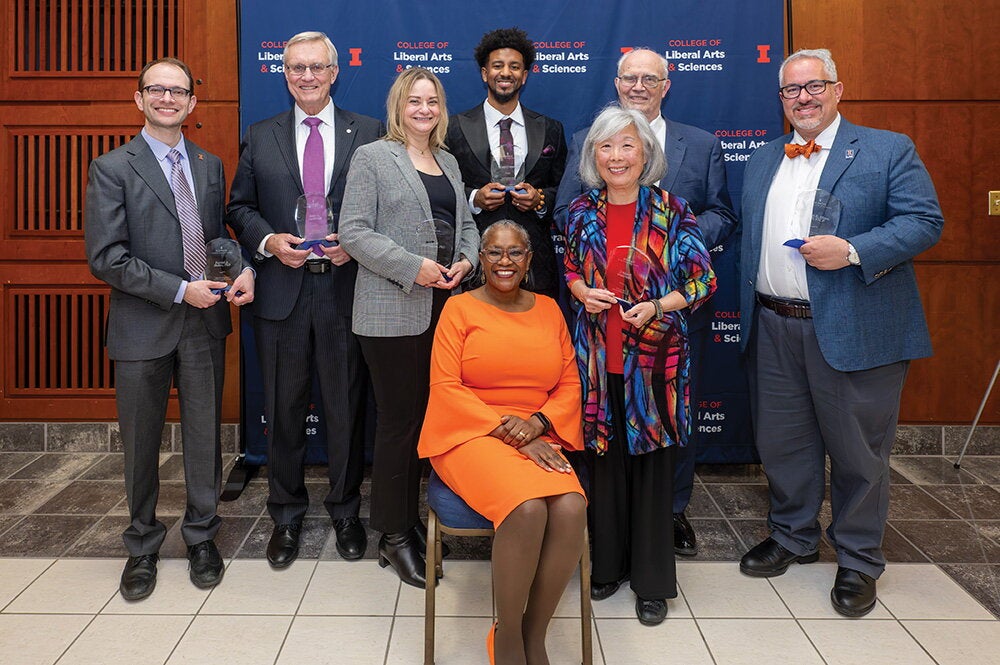

William F. Banholzer cannot say much about what he considers some of his most important work in a long career in charge of research and development portfolios measured in the billions of dollars. That’s because this work was classified research on radar-absorbing materials for stealth planes.
Banholzer, a 2014 LAS Alumni Achievement Award winner, grew up in Milwaukee and once aimed for a career flying jets in the Air Force. But when he discovered that he had 20/30 vision in one eye and, therefore, could not fly, it is only fitting that some of his most important engineering work still wound up being for jet planes.
Stealth planes escape detection by radar through both their shape and materials that absorb the microwaves, Banholzer explains. However, one persistent problem was that radar-absorbing materials could not survive inside jet engines.
“These are the kind of jet engines with the big exhaust nozzles at the back where you see the flames,” he says. “Think of the movie Top Gun.”
While working at General Electric, Banholzer co-invented material that could survive in afterburner conditions, and the technology can be found today on most NATO aircraft. This is the kind of research that made Banholzer a top gun, so to speak, with both GE and later the Dow Chemical Company.
When Banholzer found out that he would not be able to fly planes for the Air Force, he first turned his attention to medicine while doing undergraduate work in chemistry at Marquette. But being mechanically inclined, he realized during his junior year that he was best suited to engineering, so he came to Illinois to do his master’s in 1981 and PhD in 1983 in chemical engineering.
After graduation, he had job offers from six major companies, but he chose GE because of “the breadth of things I would be able to do.” This incredible diversity was reflected throughout his career as he worked on everything from light bulbs, plastics, and synthetic diamonds to agrichemicals, solar shingles, and bioengineered seeds.
He joined GE in 1983, drawn there by the Illinois pipeline that had been created by the company’s CEO Jack Welch—another U of I alumnus. In addition to the radar-absorbing material, Banholzer spent many years working on synthetic diamonds. Since diamonds are the hardest material on earth, they have all types of industrial uses, such as cutting agents.
In the 1950s, GE developed a high-pressure method for creating diamonds, mimicking processes in the earth that form diamonds. Banholzer and his team were able to develop “isotropically pure” diamonds that set world records in their ability to conduct heat. They also found ways to make the high-pressure system of creating diamonds more effective and economical, although they never could develop a cost-effective low-pressure system. (No one has.)
In lectures, Banholzer likes to point out that the stealth-technology work taught him that you have to be willing to tackle seemingly impossible tasks, while the low-pressure diamond work showed that you also need to know when to drop a project.
In 1997, Banholzer became the research and development director for the GE lighting business, working on every possible kind of light, from ordinary incandescent bulbs to lights used in football stadiums. From there, he ran the research program for plastics, as GE invented plastics that could withstand temperatures up to 250° C (482° F) before they melted.
Banholzer spent some time in Spain, helping a GE plant there fix a problem with its process for creating polycarbonate, the kind of plastic used in CDs and football helmets. Then, after 22 years with GE, he shifted to Dow Chemical in 2005 and became chief technical officer for the biggest chemical company in the United States, which has one of the top research and development divisions in the world.
Under his leadership, the net value of the research and development portfolio at Dow increased dramatically from $10 billion to $33 billion. He also oversaw the formation of an in-house start-up company, Dow Powerhouse Shingles, which produces solar-powered roofing shingles. Instead of putting down a roof and then adding heavy solar panels, solar shingles deliver energy to a house; they don’t just keep out the rain. Time magazine named the solar shingle one of the 50 best inventions of 2009.
Banholzer was named a member of the National Academy of Engineering, and in his last few years with Dow he was in charge of its venture capital division, which invested in small companies. With such a record, it’s ironic that Banholzer calls himself “the underachiever of his family.” (One of his brothers is a special agent for the FBI, and his other brother is commander of Air Force One.)
Banholzer retired in January of 2014, but he prefers to call it a “career shift” because this fall he began work as a professor at the University of Wisconsin in Madison.
“My wife would say it’s more of a failed retirement,” he says, for he will also be doing work for a private equity company in New York in addition to his new university duties. At Wisconsin, he aims to use his 30 years of industry experience to help students and faculty find commercial applications for their discoveries.
Looking back, he says, “I would not have traded my Illinois experience for anything. It set up my career, and I don’t think I would be where I am now if I hadn’t gone to the University of Illinois.”
Not bad for an underachiever.


